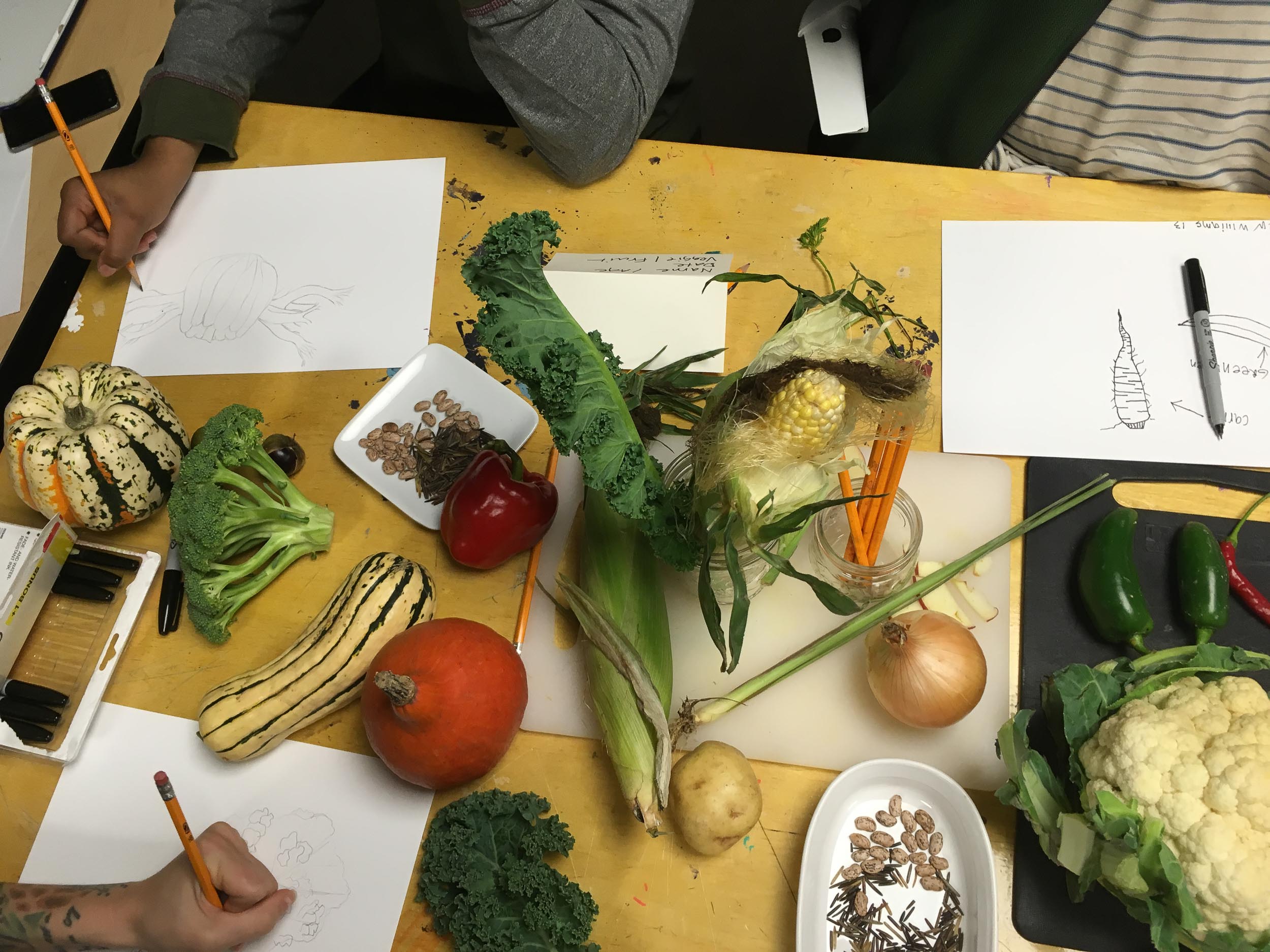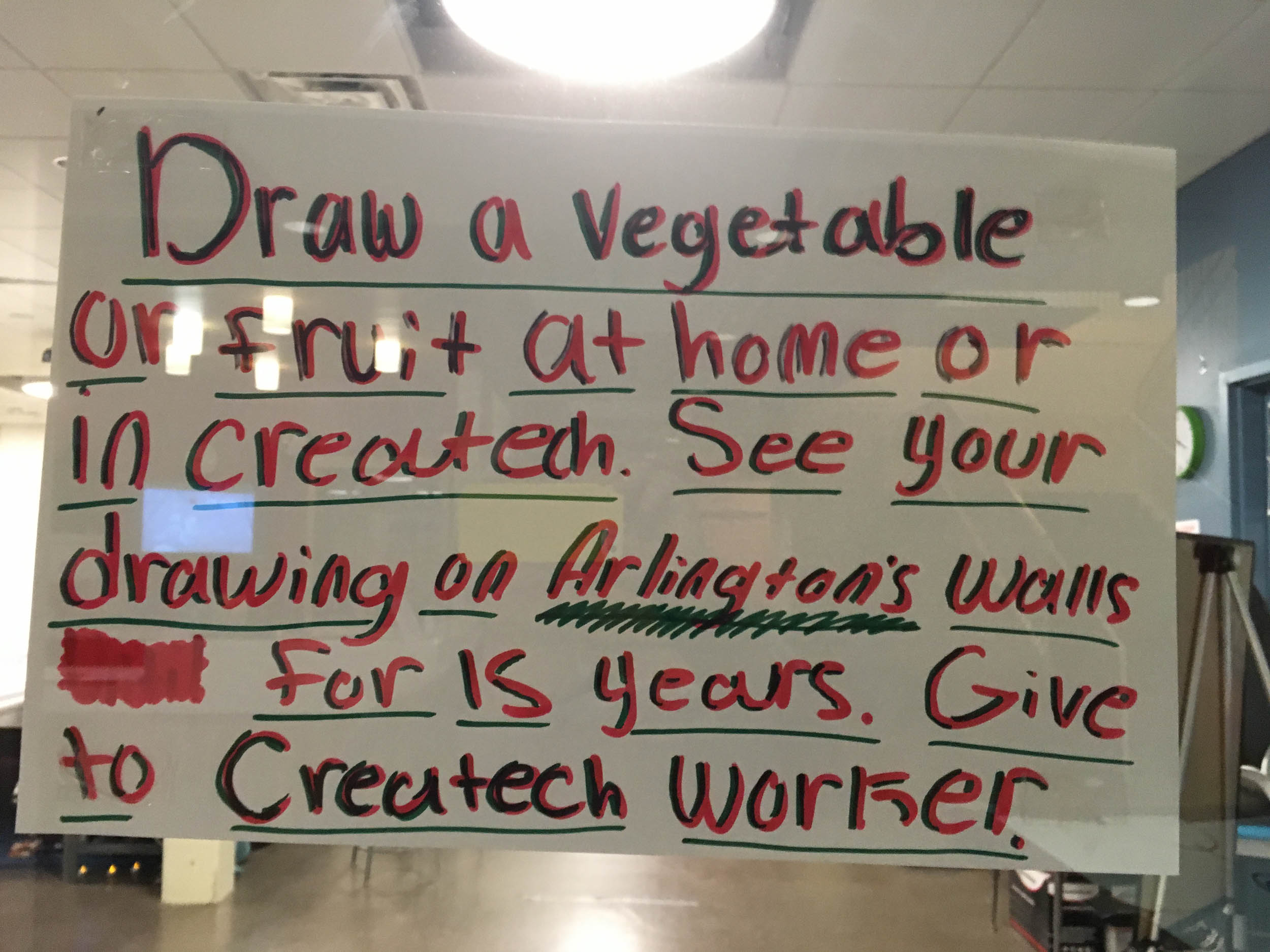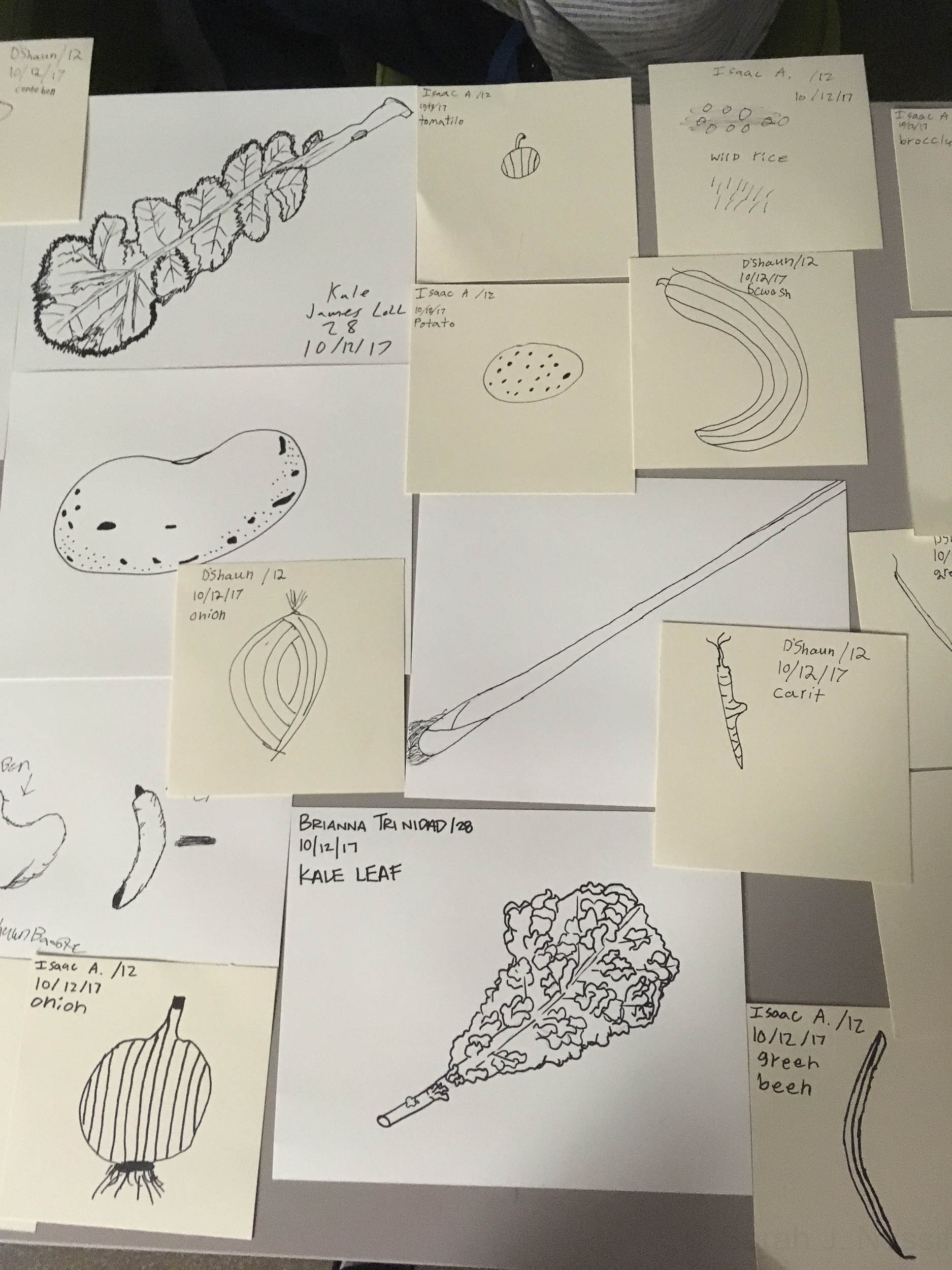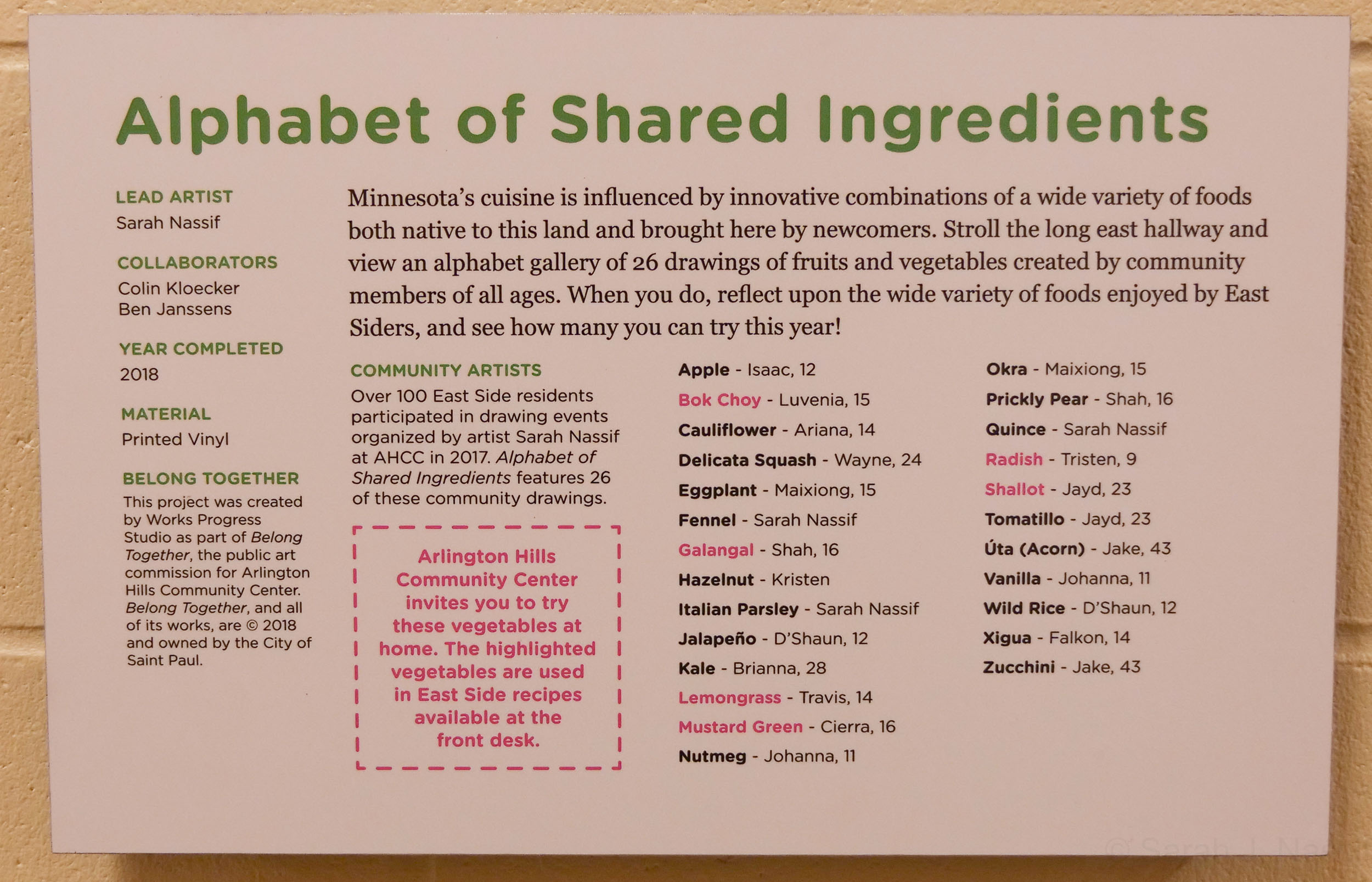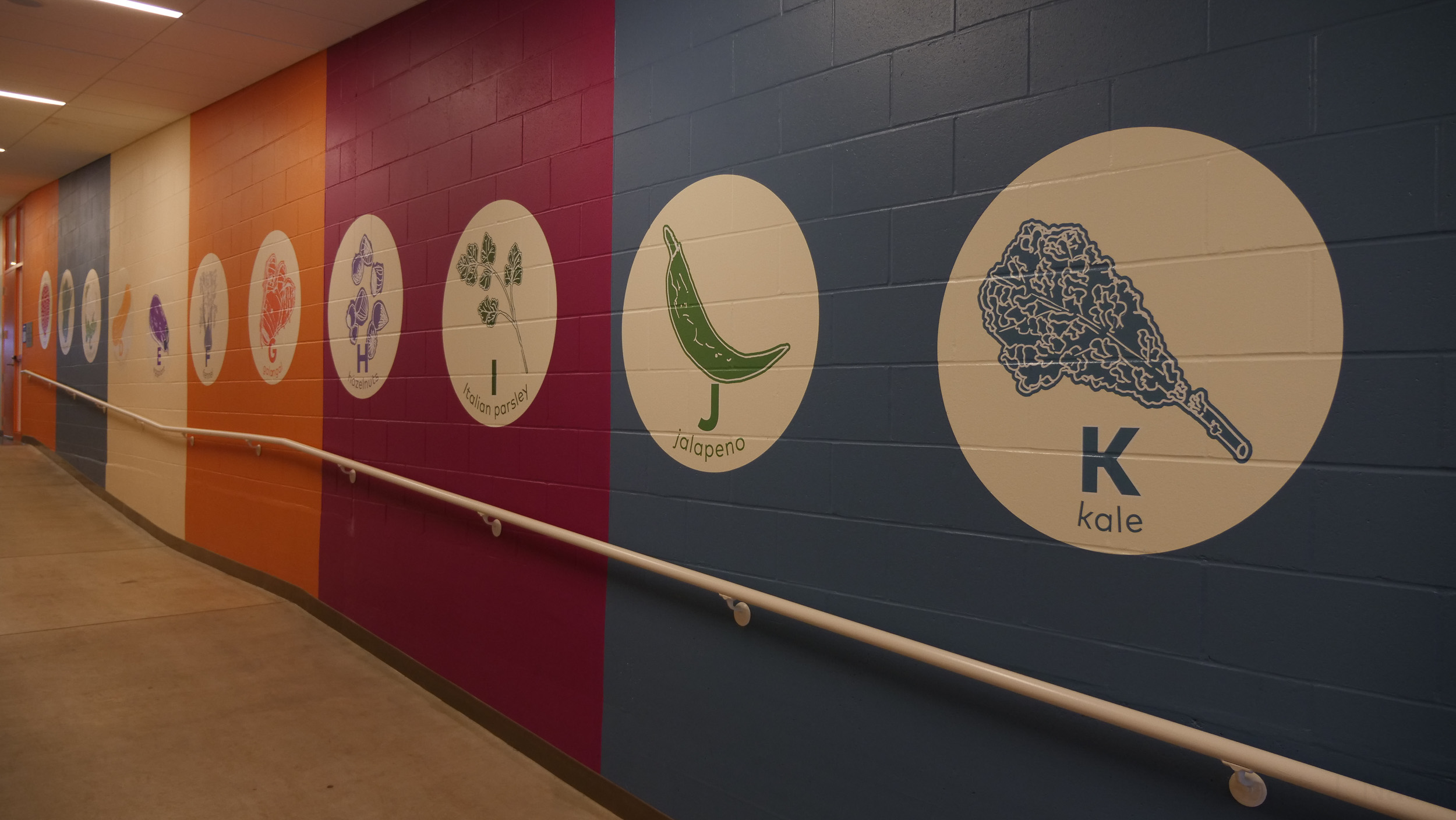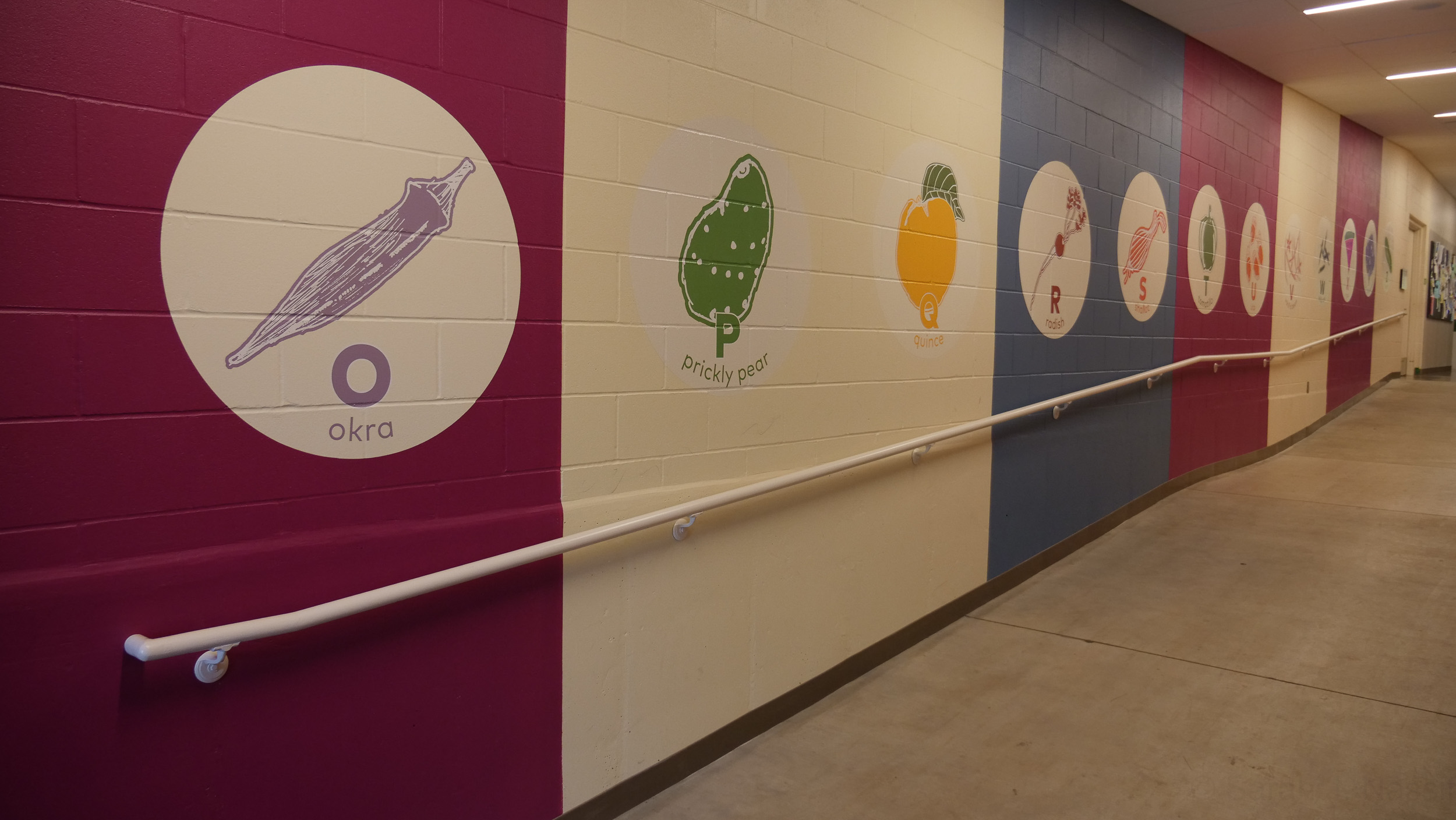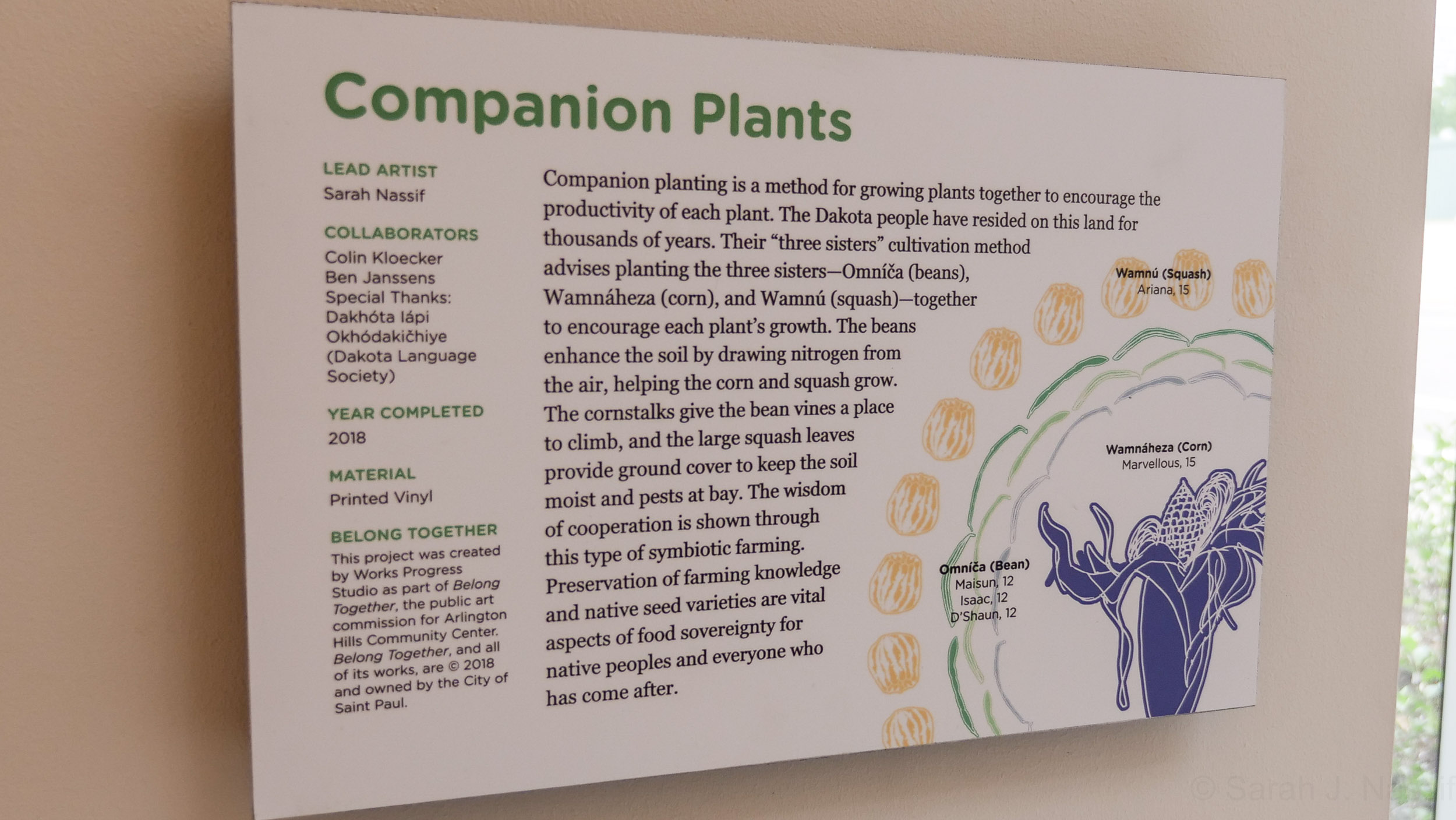Shared Ingredients (4 installations)
Shared Ingredients celebrates the food history of the East Side of St. Paul, MN in four large-scale wall pieces installed at Arlington Hills Library. These works were generated from a series of public engagements where participants drew the myriad foods that are the foundation of East Side cuisine. Events sharing herbs, vegetables, fruits and greens brought community together to look closely at foods commonly found in the neighborhood’s native and immigrant communities. In addition to the wall pieces, video interviews and recipes were collected and shared back to the community by artists
The project began with research into the cultural history of the library’s neighborhood, a place inhabited by Dakota people for centuries before immigrants from around the world found their way there. The teen Createch lab hosted two drawing session of foods from squash to lemongrass, and another gathering was held for the general community. Participants used sharpies to draw what they saw in the variety of foods on the table. These drawings were scanned and incorporated into four separate vignettes: Herbs & Migration, An Alphabet of Shared Ingredients, Companion Plants, and Preserving our Roots.
HERBS AND MIGRATION (pink mandala) Food tastes like "home" because of the distinct flavors of aromatic herbs used in cooking. Despite their very different flavors, many culinary herbs belong to the same plant family: the mint family. Identified by square stems and opposite leaves, herbs from rosemary and thyme to a world of basil cultivars to Minnesota’s native anise hyssop all belong to the mint family. Herbs are a portable way to bring the flavors of places left behind with you, and they have migrated along with people from all over the world who call East Saint Paul their home.
AN ALPHABET OF SHARED INGREDIENTS Stroll the long east hallway and view an alphabet gallery of 26 colorful, expressive drawings of fruits and vegetables made by neighborhood residents of all ages. Appreciate the wide variety of foods enjoyed by East Siders, and see how many you can try this year! Minnesota cuisine is influenced by new combinations of the wide variety of foods both native to the land and brought here by newcomers to the state. Use the alphabet gallery to identify new foods to cook as described by the recipes collected in the video interviews.
COMPANION PLANTS Companion planting is a farming practice used in many cultures to promote the productivity of crops. Three sisters cultivation is an example of companion planting and a Dakota traditional farming method. The three sisters --beans (omníča), corn (wamnáheza) and squash (wamnú) -- are sown together to encourage each plant’s growth.The beans enrich the soil by fixing nitrogen from the air, helping the corn and squash grow. The cornstalks give the bean vines a place to climb up, and the large squash leaves provide ground cover to keep the soil moist and weeds at bay. Special thanks to Dakhóta Iápi Okhódakičhiye (Dakota Language Society, dakhota.org)
PRESERVING OUR ROOTS From beets to sweet potatoes to the common carrot and onion, root vegetables are a key to survival and play an important role in MN cuisine. Sugar produced in the leaves of a plant is stored long term in the root, like an energy bank. This is why root vegetables are staple foods: they keep well over time and are energy that can be eaten when it is needed. Each of us is a storehouse of cultural knowledge that we can access and share to enrich our shared community with traditions new and old.
